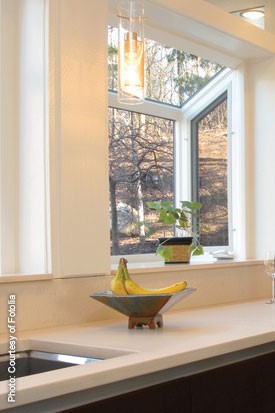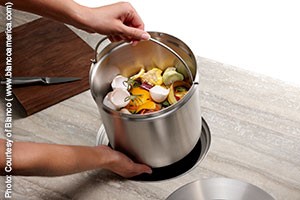How to Reduce Waste in the Kitchen
The idea that we should do our best to preserve our limited natural resources has really take hold in the U.S. Homeowners are now motivated to achieve a sustainable lifestyle. Still they are often unaware of several of the approaches they can take. For example, consider one of the areas where the typical American family generates the most trash: the kitchen.
On a regular basis, after you are finished cooking, you may be faced with numerous empty metal cans, glass jars, cardboard boxes, styrofoam containers, and plastic bottles. You may also have a mound of left over fruit and vegetable trimmings, egg shells and coffee grounds. Perhaps you have been wondering what is the most convenient and responsible way to dispose of all these items.

Actually, one of the first questions you should ask yourself is how you can reduce the amount of trash your cooking generates. You may need to revise your buying habits. By purchasing fresh food items and growing your own fruits and vegetables whenever possible, you can avoid accumulating so many packaging containers. In addition, fresh food can provide a healthier, more nutritious meal than pre-packaged food. Include a window garden in your next kitchen remodeling project, so you can conveniently harvest delicious herbs year around. In the Bay Area, we are lucky to be able to grow a vegetable garden year round. Also, think about planting some edible landscaping that can serve both culinary and decorative purposes. Reserve convenience foods for those days when you simply run out of time and have to cut corners.
Secondly, think about composting the left over scraps after you have peeled the potatoes or cracked the eggs. It is better for the environment if you let this organic material decay and return to the soil, rather than throw it in the disposal or the trash bin. A convenient stainless steel compost container with a tight-fitting lid may be installed in your kitchen countertop, next to the sink. The container stores the food scraps until you are ready to take them outside to compost. The compost, then, provides free fertilizer that can assist you in growing a bumper crop of vegetables and fruit.

Finally, find out which packaging materials may be recycled in your location. It is possible that very little of your kitchen waste needs to go into your trash container. In your kitchen base cabinets, install a recycling unit with several removable recycling bins. A recycling unit will help you separate and store recyclables until they are ready to be picked up at the curb or transported to your local recycling center. Color coded bins facilitate the proper separation of all the items.
By following these approaches to meal preparation in your kitchen–purchasing and growing fresh food, composting, and recycling–you will find yourself taking out the trash less often and putting less trash in the landfill. In other words, you will be practicing a more sustainable lifestyle.


There are no comments yet, but you can be the first